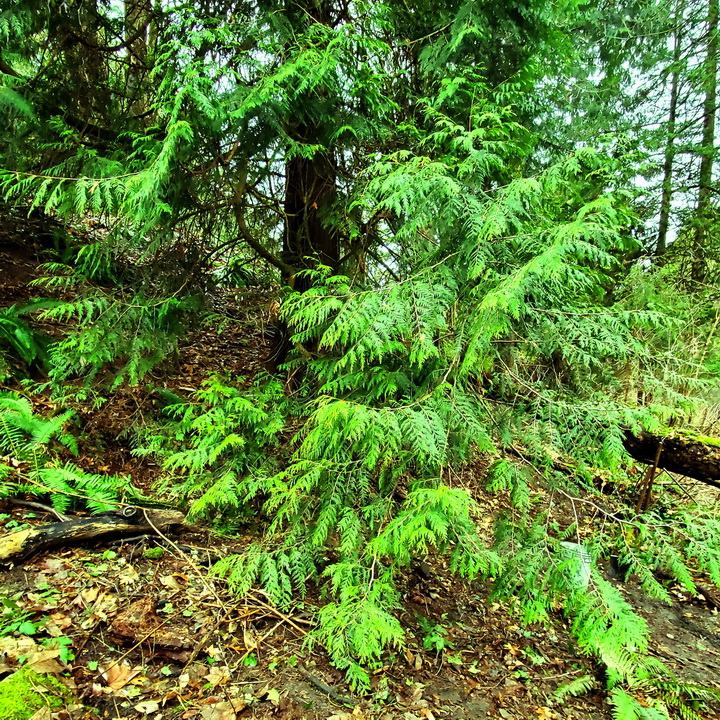Fire Ladders and Douglas Firs
Though wildfires are rare in Puget Lowland forests, when they do occur mature Douglas Firs can be killed if fire reaches their crowns. One way this can happen is through “fire ladders” — low hanging conifer branches that provide a pathway for flames from a ground fire to climb up into the canopy (See Forest Primeval by Chris Maser). In our region, shade-tolerant Western Redcedars and Western Hemlocks (which often grow beside and beneath Douglas Firs) often have lower branches that continue to grow right down to ground level (see photo above). When I am working in an area with mature Douglas Firs, I usually prune these lower branches as high as I can to prevent a future ground fire (which the thick-barked firs could survive) from becoming a crown fire. Note that there is no reason to prune these branches in forests that don’t have mature Douglas Firs, like the many forests in this region dominated by Red Alder and Bigleaf Maple.
The potential for Western Redcedars and Western Hemlocks to become fire ladders also brings into question the practice of purposefully planting these two species in stands of Douglas Firs. In theory, this practice is helping to facilitate a forest of the future that resembles that of 150 years ago, before our forests were clearcut by industrial logging. In that primeval forest of long ago, the climax trees consisted of shade-tolerant Western Hemlocks and Western Redcedars with Douglas Firs growing in areas that had been cleared by major forest fires. After the forests were clearcut, natural regeneration often favored the sun-loving firs so that today, many of our second and third growth forests are dominated by Douglas Firs.
This accident of history (i.e., the timing of industrial logging in the Puget Lowlands) could turn out to be a lucky break since Douglas Firs are perhaps the most likely of our three climax conifer species to survive the upcoming century of increasingly severe dry seasons and more frequent wildfires. The region’s Western Redcedars and Western Hemlocks are already showing signs of climate-change stress, but if we take care of them the Douglas Firs have the potential to live another century or longer, accumulating ever-increasing biomass each year and capturing far more carbon than young trees.
Hopefully it won’t be until the next century that our big Douglas Firs begin to slowly die, and the carbon they emit in respiration will be greater than the amount they capture in photosynthesis. When this happens, it would be ideal if there were younger climax conifers waiting beneath them, ready to spurt up and take their place in the canopy. However, at this point in time, planting redcedars and hemlocks under Douglas Firs may not make sense. In the short term they can become fire ladders and in the long term they may not be the right trees for our future climate.
